Who would have thought we’d ever see Balerion the Black Dread in Game of Thrones. Aegon the Conqueror’s mount has been dead for centuries, and a flashback seemed unlikely, so that appeared to be it. Until last week: in “Stormborn,” Cersei tested Qyburn’s new anti-dragon artillery against the enormous skull of Balerion. Of course, it wasn’t like seeing him alive and in his prime, but just seeing the remains of this fearsome, historic creature was awe-inspiring. As it that wasn’t enough, now you’ll be get to see how this impressive sculpture (sorry, it wasn’t an actual dragon skull) was created as well.
Newsweek brings us this wonderful look into the production, with the guidance of the head of the sculpture department, Darren Fitzsimons, who “worked with a team of four sculptors over six weeks” to sculpt this colosal prop, based on an original “concept illustration and a digital model” created “under the direction of production designer Deborah Riley, [which] was approved by [showrunners] Dan [Weiss] and David [Benioff] —they were keen that the skull have the detail of an evolved creature.”
“We set out a grid and drew a front and side elevation of the skull,” Fitzsimons began. “We then calculated that we needed 30 poly blocks that are each 2 feet by 4 feet by 8 feet. These were all glued together. A basic shape was then created using hot wires, followed by an assortment of hand tools to carve the detail on the interior and exterior”, Fitzsimons continued. “It does not have any internal metal armature. The teeth are the supporting structure on which the rest of the sculpt sits.” To give us a better sense of how impressive this is, he said the final skull is “32 feet by 20 feet by 15 feet high.”
Of course, Balerion’s skull wasn’t just a static prop, as Cersei had to shoot a bolt from Qyburn’s scorpion through the skull, so the special effects team had to get involved “to create the cavity needed for the piece that would explode when the bolt hit it.”
One may think he wouldn’t enjoy seeing his creation destroyed, but nothing is further from the truth: “It was not sad for me to see the skull damaged in the action, actually the opposite. I enjoy being a sculptor for film and having my work interactive and play a role in telling the story. The way it is to work on camera has to always be my focus.”
Once finished, the piece was “plastered, painted and cut up for transport from Belfast, Northern Ireland, to Seville, Spain. It was reassembled on site in a day and a half,” the head sculptor recounted, referring to the location chosen to depict the deepest dungeons of the Red Keep where the Targaryen relics reside: Seville’s Royal Shipyards.
“It is the most challenging piece that the sculpture department has created. There was a lot of sculpture work in Season 7, and time was a problem. There was no time to sculpt a clay maquette; we worked directly from the digital model, which proved challenging.”
Since the episode aired, the has been much discussion about Balerion’s size compared to Drogon, the largest of Dany’s dragons. The last time we saw Dany next to her dragon, in Battle of the Bastards, Drogon’s head looked decidedly smaller than Balerion’s does next to Cersei. But we haven’t seen the dragons next to any humans this season yet, so how does Drogon currently compare to Balerion at his death? According to Fitzsimons, they “calculated that it would be about the same size as Drogon is in Season 7.”
If that claim is remotely accurate, get ready for a truly enormous Drogon this season, whenever the black creature and its smaller siblings get back into action.
Speaking of the Dragon Queen’s three children, Thrillist contacted the special effects artists involved in the creation of the dragons throughout the years, and ran down the evolution of Drogon, Rhaegal and Viserion, beginning in season one:
“We were given a sculpted maquette to base our CGI build on,” recalled Lucy Ainsworth-Taylor, the visual effects producer of BlueBolt, the London-based special effects studio in charge of bringing the birth of the dragons to life. “But when we began the build we realized that the spikes on the back of its neck were too long to allow it to turn its head without stabbing itself. We also made alterations to how the wings and legs worked so that we weren’t creating any design problems later on when they would grow up — we knew [the dragons] were going to fly in later seasons.”
Moving on to season two, the dragons were still pretty much just as small but they were almost completely re-worked, looking much more like younger versions of the dragons we know and love today. The company in charge of the redesign was a German VFX studio, Pixomondo, who were new back then yet have stayed with the show ever since:
“I forced our animators and riggers to play with the wings [of chicken] to understand the natural restrictions and the anatomy of a real wing,” visual effects supervisor Sven Martin told Thrillist. “Peeling off the skin to one side to reveal the muscle layout was very helpful for the rigging artists, even though it was a little disgusting.”
Since then, thanks to Pixomondo, the dragons have felt much more realistic and authentic, because of the evident mix of reptilian, avian, and bat-like features. The dragon-fire had to wait until season three for this leap forward in realism, when Game of Thrones visual effects supervisor Joe Bauer decided to use real fire – that is, flamethrowers: “They’d shoot huge flame bursts against black material to be used as an element or film a flamethrower right in the shot setting a stuntman on fire.” For the Daznak’s Pit sequence in season five, a flamethrower was rigged onto a motion-control crane arm, effectively creating a mechanical dragon on-set.
Another special effect hurdle appeared at that time, as Drogon had become big enough for Daenerys to ride. For these dragonrider scenes in the last three seasons, Pixomondo pre-annimated everything as best they could based on storyboards and pre-visualizations, and that digital information was then emulated by the motion-control construct Emilia Clarke actually rode on-set.
The dragons had an even larger setpiece exactly a season later, when they made an example of an enemy ship to frighten the slaver fleet in season six. As in season five, the dragons themselves were created by LA-based studio Rhythm & Hues, while the Meereenese enviroments were handled by Rodeo FX, a Canadian special effects company. Thrillist reports that the most challenging part wasn’t the CGI but merging it with the many practical effects used for the sequence, such as the dragonfire, the sinking boat, and Daenerys herself. According to the VFX artists, the use of these elements brings an authenticity to the scene.
So, what about season seven? We saw Drogon, Rhaegal and Viserion in the premiere, flying over the Targaryen fleet and circling the tower of Dragonstone, but they skipped the following episode, so we haven’t really seen much of them yet. Rest assured, we’ll see them a lot more soon, and there is a lot more to see, too; they have become so large that a motion-controlled crane-mounted flamethrower couldn’t go high enough or quickly enough to keep up with their new size. Instead of a Technocrane, this season the special effects department used a Spidercam cable system — essentially a camera hanging from a horizontally-placed cable, flying at high speeds from one end to another.
Man, am I looking forward to see that.
The post Witness the Creation of the Dragon Skull for “Stormborn” and the Evolution of Dragon VFX from Season 1 to 7 appeared first on Watchers on the Wall.
Via http://watchersonthewall.com
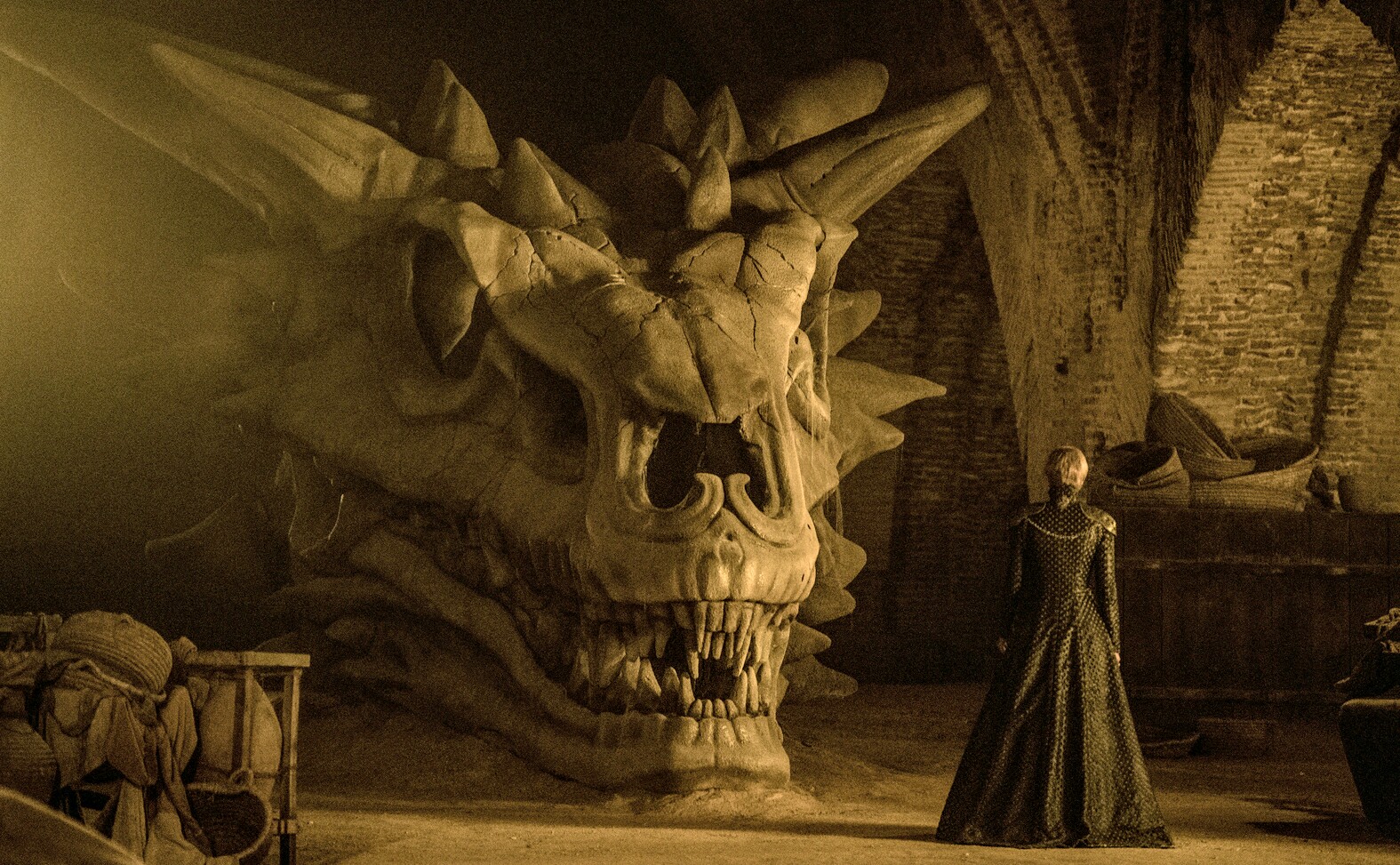
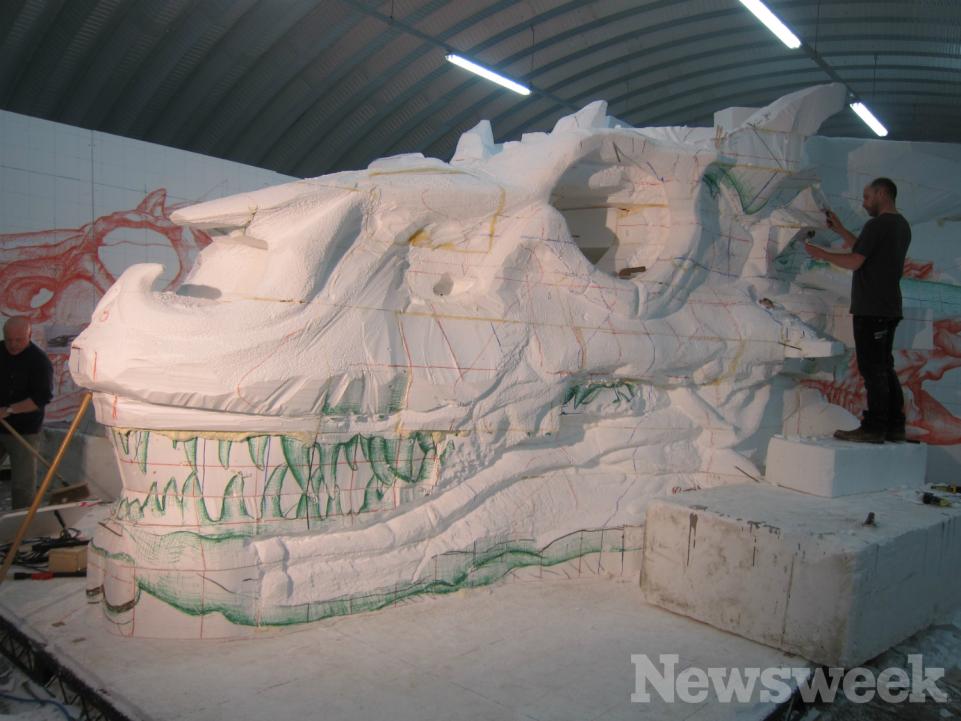
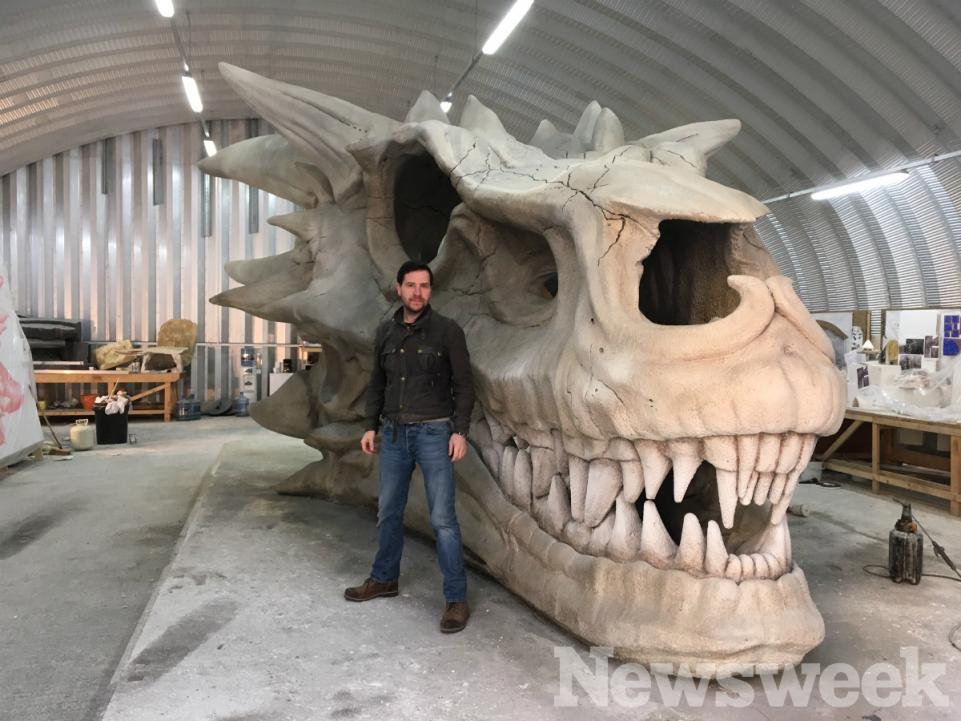

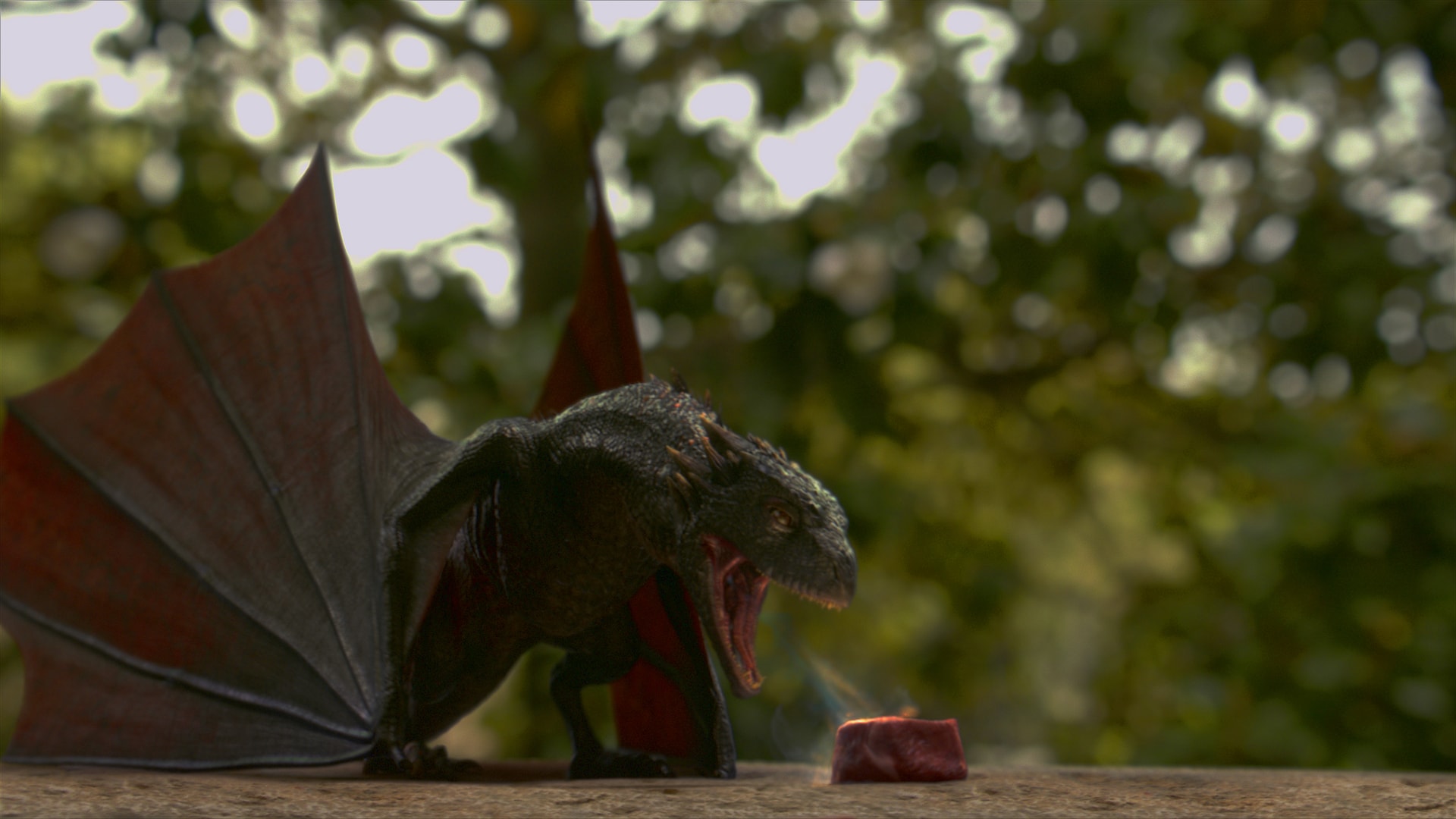
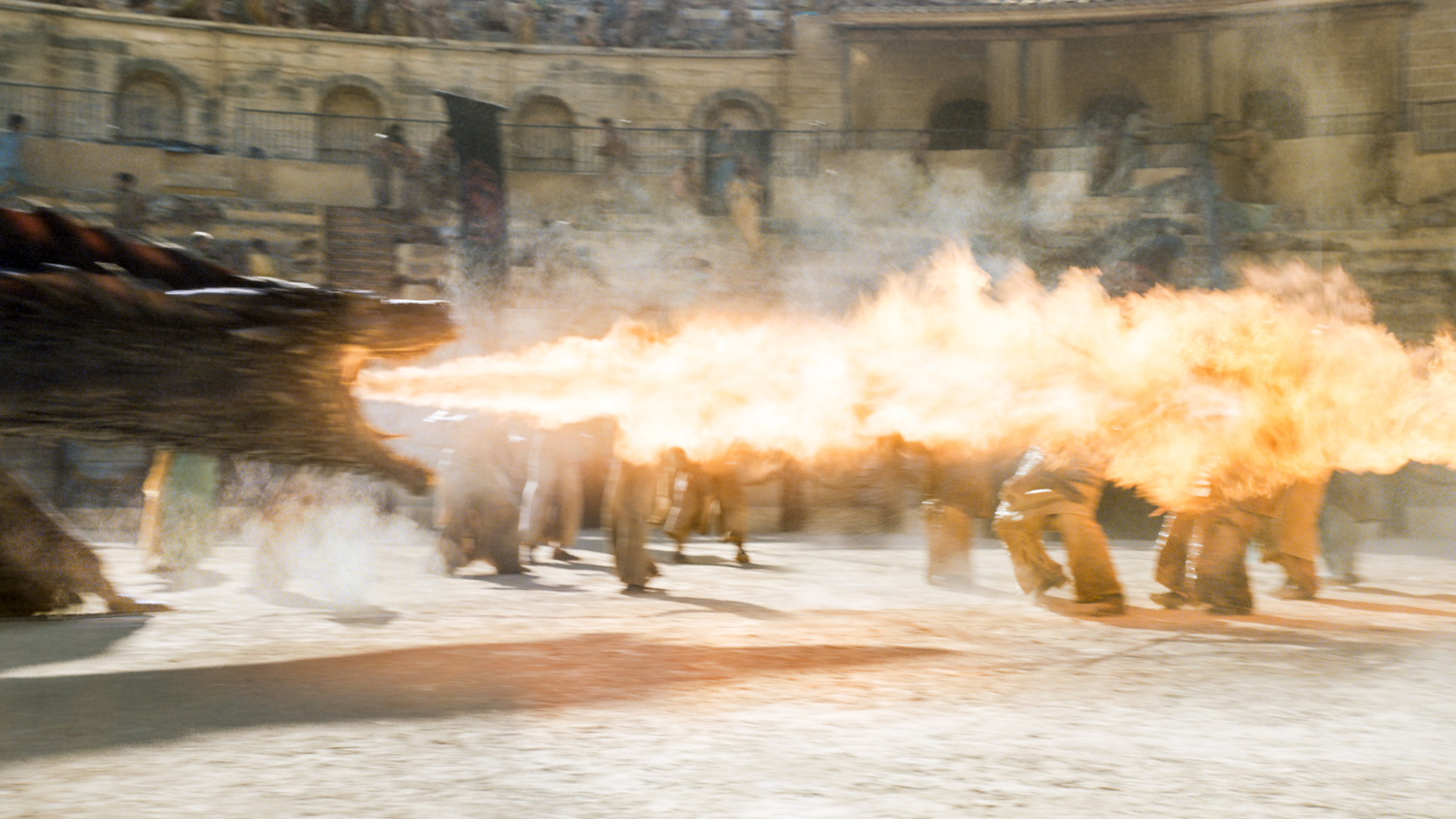

No comments:
Post a Comment